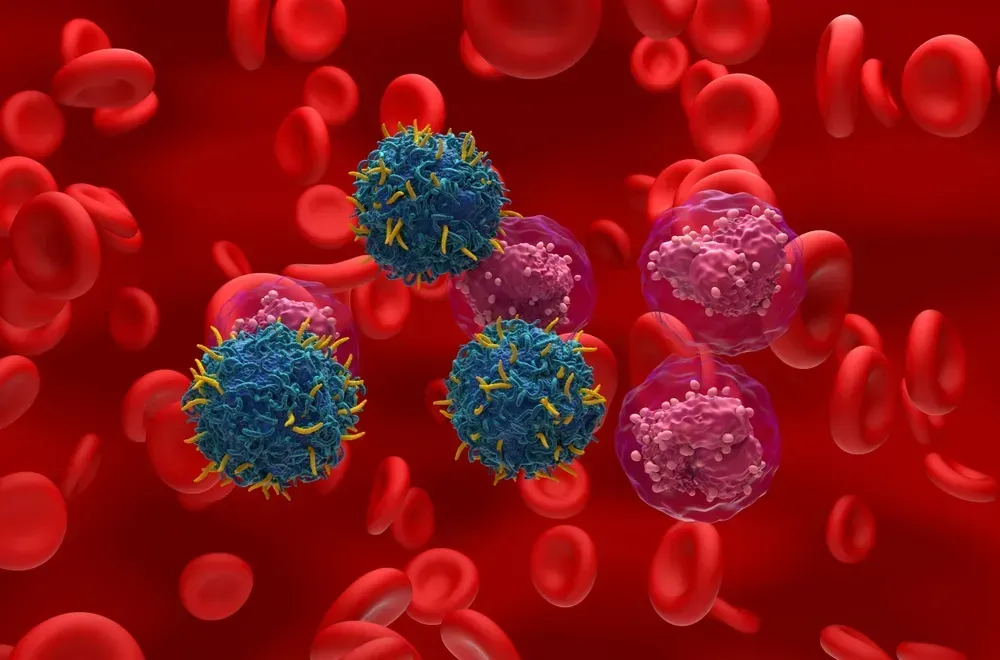Taking a Break from Lenalidomide Maintenance

Two recent reports provide guidance on whether some multiple myeloma patients may be able to take a break from maintenance therapy and, if so, when they could do so. As of now, standard maintenance therapy for multiple myeloma treatment has no established end date.
The first report comes from a University of Chicago (UoC) team and was published in the Blood Cancer Journal. The second report is from a presentation at the most recent International Myeloma Society (IMS) Annual Meeting, which was presented by Memorial Sloan Kettering Cancer Center (MSKCC), New York.
Both reports highlight why prolonged maintenance therapy is a significant concern for patients, including:
-
The impact on health-related quality of life (HRQoL) due to ongoing maintenance treatment-related side effects
-
The increased risk of second cancers (not just secondary cancers such as skin cancers, but also second primary cancers such as other blood cancers).
-
A significant financial burden for patients and payors, even in the age of the generic availability of Revlimid (lenalidomide).
Breaking Down the Maintenance-Duration Studies
The two studies conducted by the University of Chicago and Sloan Kettering differ in several important aspects.
Study Types and Details
- University of Chicago: A prospective intervention study. Registered as NCT04108624 (MRD2STOP), it involved 45 evaluable patients.
- Sloan Kettering: An observational study. Registered as NCT04221178, it included 43 evaluable patients.
- Both studies had a follow-up period of three years.
Enrollment Criteria
- University of Chicago: Patients with at least one year of maintenance therapy, no detectable disease by PET-scan, and MRD-negative status by flow cytometry or NGS to 10−6 in bone marrow. Most patients were on single-agent maintenance therapy (typically Revlimid).
- Sloan Kettering: Patients with sustained MRD-negative status for three or more years during continued maintenance with Revlimid.
Testing Frequency
| University of Chicago | Memorial Sloan Kettering Cancer Center | |
| Serum Testing | every 3 months | every 3 months |
| Minimal Residual Disease (MRD) Testing | every 12 months | every 6 months |
| PET Scan | every 12 months | every 12 months |
Primary Endpoints
The two studies shared the primary endpoint (objective of the study) of looking at the progression-free survival (PFS) of the patients off of maintenance therapy. PFS measures the time it takes from the beginning of an event (in this case, going off of maintenance therapy) to the time the disease (multiple myeloma) progresses.
In addition to PFS, the other primary endpoints of the studies included:
- University of Chicago: Monitoring MRD resurgence (including myeloma progression) and overall survival, with sustained MRD-negative status at one year.
- Sloan Kettering: Focused on health-related quality of life and sustained MRD-negative status at three years, as well as event-free survival.
Secondary Endpoints
Secondary endpoints are other data points that the researchers are interested in knowing about without them being the primary focus of the study. For these studies, they included:
- University of Chicago: Testing feasibility of alternative MRD test methods, comparing them with next-generation sequencing (NGS) and patient-reported outcome scores related to quality of life.
- Sloan Kettering: Duration of MRD-negative response, responses to retreatment after relapse, and continued PFS in high-risk patients.
Understanding the Maintenance Therapy Study Results
Progression-free survival (PFS) outcomes differed between the University of Chicago and Sloan Kettering studies.
At the University of Chicago, the PFS rates at three years were:
- 85% for the entire cohort.
- 92% for patients who were MRD-negative at <10-7 at baseline.
- 49% for patients who were MRD-positive at 10-7 at baseline.
At Sloan Kettering, the two-year results showed:
- 78% of patients remained MRD-negative, while 22% became MRD-positive.
- 58% of patients experienced no disease progression, while 48% showed disease progression.
When focusing on high-risk patients, the University of Chicago study found no significant difference in PFS between high-risk and regular patients who maintained MRD-negative status at ≤10-6.
In terms of retreatment at the time of progression, both studies showed some patients needed to restart therapy.
At the University of Chicago, 5 out of 45 patients experienced disease progression and were successfully retreated, achieving MRD-negative status at ≤10-6. At Sloan Kettering, 5 out of 43 patients had disease progression, and 4 restarted lenalidomide treatment.
Regarding survival, the University of Chicago study reported one death out of 45 patients (a 97% survival rate over three years) due to a second primary hematologic malignancy. No deaths were reported in the Sloan Kettering study.
Quality of life data was reported only for the University of Chicago study, which showed statistically significant improvements in areas such as role functioning, insomnia, diarrhea, pain, and financial difficulties following lenalidomide discontinuation. The quality of life results for Sloan Kettering are yet to be reported.
As for adverse events, the University of Chicago study reported that 3 out of 45 patients developed a second primary hematologic malignancy but remained free of myeloma. Adverse events in the Sloan Kettering study have not yet been reported.
Myeloma Maintenance Therapy Study Conclusions
University of Chicago Study
This study builds on prior research suggesting that Revlimid (lenalidomide) maintenance therapy may be paused for patients who have sustained MRD-negative status at ≤10-6.
The researchers noted that "our results are most applicable to patients in their first line of therapy without ultra-high-risk disease." This specifically excludes patients with Plasma Cell Leukemia (PCL), as those in the ultra-high-risk category typically do not achieve a long duration of MRD-negative status at ≤10-6.
They also emphasized that "cost savings from the discontinuation of maintenance therapy could be substantial."
However, "second hematologic cancers occurred despite maintenance discontinuation." It remains unclear whether this risk could be reduced by stopping maintenance therapy earlier after exposure to high-dose melphalan.
Sloan Kettering Study
The Sloan Kettering study concluded that "cessation of [maintenance] therapy is feasible in [patients with] 3-year sustained MRD negativity."
Drawing Important Conclusions
While these studies provide valuable insights, they do not offer a definitive answer on when or if maintenance therapy should be stopped.
Both studies indicate that about 20% of patients will relapse at some point after pausing or stopping treatment, even with prolonged MRD-negative bone marrow results. They also reinforce that even if your myeloma specialist advises pausing treatment, it’s crucial to remain diligent with regular blood tests and less frequent bone marrow biopsies.
And to be clear, a pause in treatment does NOT mean you can say "goodbye" to your specialist. Your health remains your responsibility.
Explore more about Minimal Residual Disease (MRD), a key factor in evaluating the need for maintenance therapy, through our HealthTree University course, led by myeloma experts:
Two recent reports provide guidance on whether some multiple myeloma patients may be able to take a break from maintenance therapy and, if so, when they could do so. As of now, standard maintenance therapy for multiple myeloma treatment has no established end date.
The first report comes from a University of Chicago (UoC) team and was published in the Blood Cancer Journal. The second report is from a presentation at the most recent International Myeloma Society (IMS) Annual Meeting, which was presented by Memorial Sloan Kettering Cancer Center (MSKCC), New York.
Both reports highlight why prolonged maintenance therapy is a significant concern for patients, including:
-
The impact on health-related quality of life (HRQoL) due to ongoing maintenance treatment-related side effects
-
The increased risk of second cancers (not just secondary cancers such as skin cancers, but also second primary cancers such as other blood cancers).
-
A significant financial burden for patients and payors, even in the age of the generic availability of Revlimid (lenalidomide).
Breaking Down the Maintenance-Duration Studies
The two studies conducted by the University of Chicago and Sloan Kettering differ in several important aspects.
Study Types and Details
- University of Chicago: A prospective intervention study. Registered as NCT04108624 (MRD2STOP), it involved 45 evaluable patients.
- Sloan Kettering: An observational study. Registered as NCT04221178, it included 43 evaluable patients.
- Both studies had a follow-up period of three years.
Enrollment Criteria
- University of Chicago: Patients with at least one year of maintenance therapy, no detectable disease by PET-scan, and MRD-negative status by flow cytometry or NGS to 10−6 in bone marrow. Most patients were on single-agent maintenance therapy (typically Revlimid).
- Sloan Kettering: Patients with sustained MRD-negative status for three or more years during continued maintenance with Revlimid.
Testing Frequency
| University of Chicago | Memorial Sloan Kettering Cancer Center | |
| Serum Testing | every 3 months | every 3 months |
| Minimal Residual Disease (MRD) Testing | every 12 months | every 6 months |
| PET Scan | every 12 months | every 12 months |
Primary Endpoints
The two studies shared the primary endpoint (objective of the study) of looking at the progression-free survival (PFS) of the patients off of maintenance therapy. PFS measures the time it takes from the beginning of an event (in this case, going off of maintenance therapy) to the time the disease (multiple myeloma) progresses.
In addition to PFS, the other primary endpoints of the studies included:
- University of Chicago: Monitoring MRD resurgence (including myeloma progression) and overall survival, with sustained MRD-negative status at one year.
- Sloan Kettering: Focused on health-related quality of life and sustained MRD-negative status at three years, as well as event-free survival.
Secondary Endpoints
Secondary endpoints are other data points that the researchers are interested in knowing about without them being the primary focus of the study. For these studies, they included:
- University of Chicago: Testing feasibility of alternative MRD test methods, comparing them with next-generation sequencing (NGS) and patient-reported outcome scores related to quality of life.
- Sloan Kettering: Duration of MRD-negative response, responses to retreatment after relapse, and continued PFS in high-risk patients.
Understanding the Maintenance Therapy Study Results
Progression-free survival (PFS) outcomes differed between the University of Chicago and Sloan Kettering studies.
At the University of Chicago, the PFS rates at three years were:
- 85% for the entire cohort.
- 92% for patients who were MRD-negative at <10-7 at baseline.
- 49% for patients who were MRD-positive at 10-7 at baseline.
At Sloan Kettering, the two-year results showed:
- 78% of patients remained MRD-negative, while 22% became MRD-positive.
- 58% of patients experienced no disease progression, while 48% showed disease progression.
When focusing on high-risk patients, the University of Chicago study found no significant difference in PFS between high-risk and regular patients who maintained MRD-negative status at ≤10-6.
In terms of retreatment at the time of progression, both studies showed some patients needed to restart therapy.
At the University of Chicago, 5 out of 45 patients experienced disease progression and were successfully retreated, achieving MRD-negative status at ≤10-6. At Sloan Kettering, 5 out of 43 patients had disease progression, and 4 restarted lenalidomide treatment.
Regarding survival, the University of Chicago study reported one death out of 45 patients (a 97% survival rate over three years) due to a second primary hematologic malignancy. No deaths were reported in the Sloan Kettering study.
Quality of life data was reported only for the University of Chicago study, which showed statistically significant improvements in areas such as role functioning, insomnia, diarrhea, pain, and financial difficulties following lenalidomide discontinuation. The quality of life results for Sloan Kettering are yet to be reported.
As for adverse events, the University of Chicago study reported that 3 out of 45 patients developed a second primary hematologic malignancy but remained free of myeloma. Adverse events in the Sloan Kettering study have not yet been reported.
Myeloma Maintenance Therapy Study Conclusions
University of Chicago Study
This study builds on prior research suggesting that Revlimid (lenalidomide) maintenance therapy may be paused for patients who have sustained MRD-negative status at ≤10-6.
The researchers noted that "our results are most applicable to patients in their first line of therapy without ultra-high-risk disease." This specifically excludes patients with Plasma Cell Leukemia (PCL), as those in the ultra-high-risk category typically do not achieve a long duration of MRD-negative status at ≤10-6.
They also emphasized that "cost savings from the discontinuation of maintenance therapy could be substantial."
However, "second hematologic cancers occurred despite maintenance discontinuation." It remains unclear whether this risk could be reduced by stopping maintenance therapy earlier after exposure to high-dose melphalan.
Sloan Kettering Study
The Sloan Kettering study concluded that "cessation of [maintenance] therapy is feasible in [patients with] 3-year sustained MRD negativity."
Drawing Important Conclusions
While these studies provide valuable insights, they do not offer a definitive answer on when or if maintenance therapy should be stopped.
Both studies indicate that about 20% of patients will relapse at some point after pausing or stopping treatment, even with prolonged MRD-negative bone marrow results. They also reinforce that even if your myeloma specialist advises pausing treatment, it’s crucial to remain diligent with regular blood tests and less frequent bone marrow biopsies.
And to be clear, a pause in treatment does NOT mean you can say "goodbye" to your specialist. Your health remains your responsibility.
Explore more about Minimal Residual Disease (MRD), a key factor in evaluating the need for maintenance therapy, through our HealthTree University course, led by myeloma experts:

about the author
Paul Kleutghen
I am a patient diagnosed in 2014 with primary plasma cell leukemia (pPCL), a rare and aggressive variant of multiple myeloma and have been very fortunate to find successful treatment at the division of Cellular Therapy at the Duke University Cancer Institute. My wife, Vicki, and I have two adult children and two grandsons who are the ‘lights of our lives’. Successful treatment has allowed Vicki and I to do what we love best : traveling the world, albeit it with some extra precautions to keep infections away. My career in the pharmaceutical industry has given me insights that I am currently putting to use as an advocate to lower drug pricing, especially prices for anti-cancer drugs. I am a firm believer that staying mentally active, physically fit, compliant to our treatment regimen and taking an active interest in our disease are keys to successful treatment outcomes.
More on Treatment Advances
Trending Articles
Upcoming Events




Get the Latest Multiple Myeloma Updates, Delivered to You.
By subscribing to the HealthTree newsletter, you'll receive the latest research, treatment updates, and expert insights to help you navigate your health.
Together we care.
Together we cure.
3x Faster.











